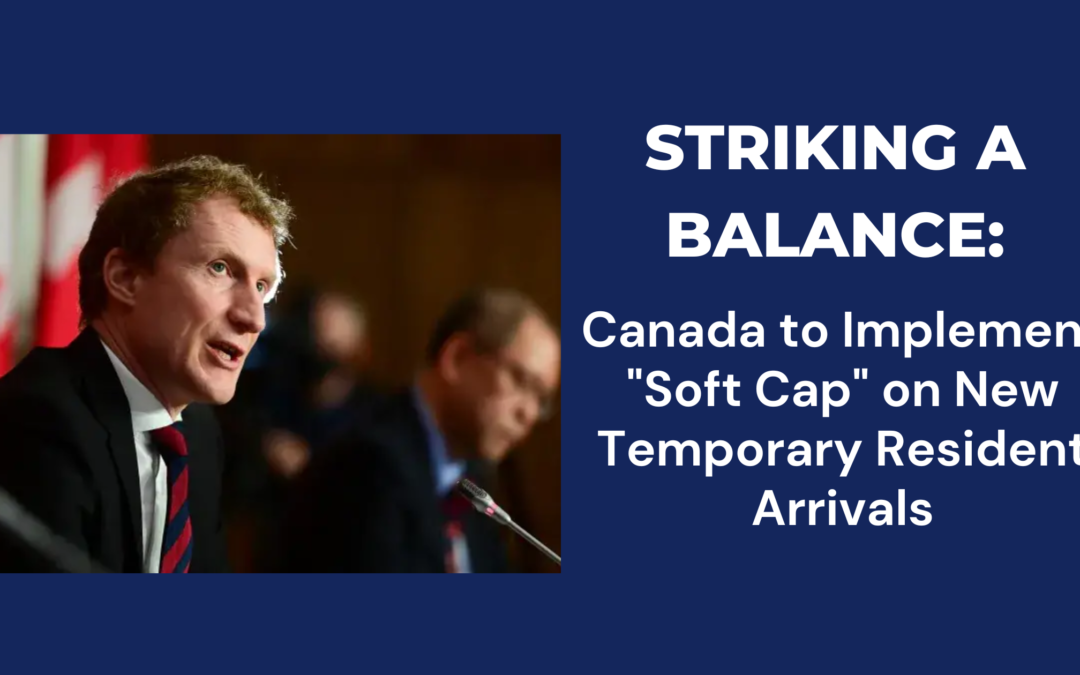In a move towards fostering a balanced and sustainable immigration system, Minister Marc Miller recently announced Canada’s intention to implement a “soft cap” on the number of new temporary resident arrivals to the country. This decision marks a significant step in managing the influx of temporary residents while ensuring the continued vitality of Canada’s economy and society. Let’s delve into what this “soft cap” entails and the implications it holds for Canada’s immigration landscape.
Understanding the “Soft Cap”:
A “soft cap” on temporary resident arrivals refers to a flexible limit placed on the number of individuals granted temporary visas to enter Canada for various purposes, including work, study, and tourism. Unlike a rigid cap, which imposes strict numerical limits, a soft cap allows for adjustments and fluctuations based on evolving economic, social, and geopolitical factors. This approach enables policymakers to maintain control over temporary resident volumes while accommodating changing needs and circumstances.
Rationale and Objectives:
Minister Miller’s announcement reflects a nuanced understanding of the challenges and opportunities associated with temporary resident arrivals. By implementing a soft cap, Canada seeks to achieve several key objectives:
- Manageable Growth: The soft cap provides a mechanism for managing the growth of temporary resident arrivals in a controlled manner. By setting flexible limits, Canada can mitigate the risk of sudden surges or declines in temporary resident volumes, ensuring a more predictable and stable immigration environment.
- Balanced Allocation of Resources: Limiting temporary resident arrivals helps ensure a balanced allocation of resources, including housing, healthcare, and social services. By preventing excessive strain on infrastructure and public services, Canada can maintain quality standards of living for both residents and newcomers.
- Promote Long-Term Integration: By regulating the flow of temporary residents, Canada can focus on promoting their long-term integration and contribution to society. This includes providing support for language acquisition, skills development, and cultural adaptation, fostering a sense of belonging and inclusion among newcomers.
Implications for Immigration Policy:
The introduction of a soft cap on temporary resident arrivals signals a strategic shift in Canada’s immigration policy framework. It reflects a commitment to evidence-based decision-making, adaptive governance, and proactive management of immigration flows. Moreover, it underscores Canada’s reputation as a responsible global actor, balancing the imperatives of economic growth with social cohesion and sustainability.
Challenges and Considerations:
While the soft cap offers several benefits, its implementation may pose challenges in practice. Balancing flexibility with accountability, ensuring transparency in decision-making, and addressing stakeholder concerns will be critical in navigating the transition. Moreover, monitoring and evaluating the effectiveness of the soft cap over time will require robust data collection, analysis, and stakeholder engagement.
Looking Ahead:
As Canada prepares to set immigration levels in the fall, Minister Marc Miller’s announcement regarding the implementation of a soft cap on temporary resident arrivals sets the stage for informed and deliberative policy discussions. By striking a balance between flexibility and control, Canada can continue to welcome newcomers while safeguarding the interests of its citizens and residents.

